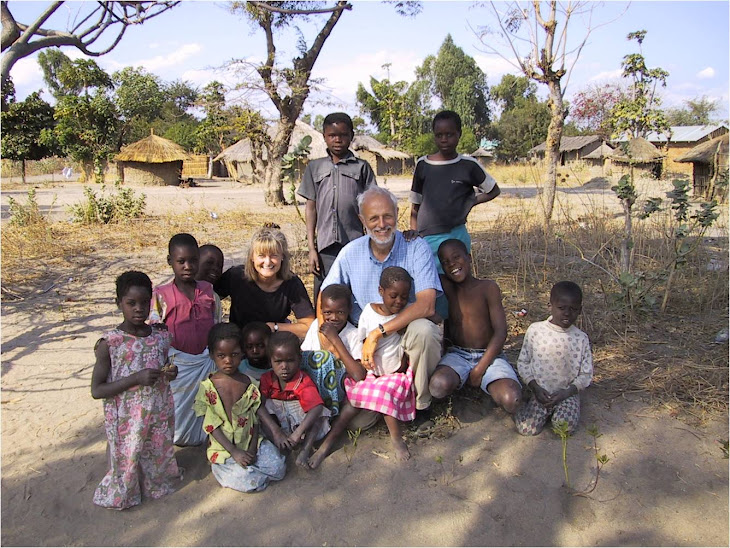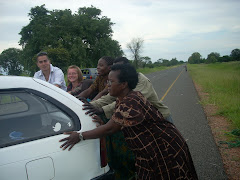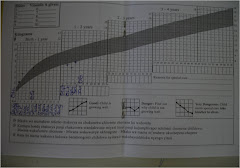How well a child grows says a lot about the family and community in which they live. All of our kids have them and it is a rare day that you find an unusual one. They are a simple graph. The column on the left side of the page is weight and the row at the bottom is the child’s age in months until age five. On a 6 month interval or more frequent intervals you put a dot that corresponds to the child’s weight and age that day. Over time, normally you see a steady and predictable weight gain as the child gets older. They are usually so normal that one might ask are they of any value.
Come to Malawi. Growth charts are like tree rings which document good and bad growing years, fires in the forest, damage from insects. When we are asked to examine large numbers of children, we ask to see their growth charts. It is easy to sort the sick from the well. The abnormal growth charts are dramatic. They record the hunger times (njala), death of the mother, and a chronic illness like malaria, worms, or asthma. Even functional defects of one’s heart valves can affect a child’s growth.
Look at the one on the right. This one is from Malawi and the gray shaded area is where 95% of the children should fall as they grow. This child was above normal for weight and age when he was born (above the gray area) but by two months of age something happened and by the time he was seen again when he was 14 months, he had fallen below the normal growth curve. This is a child you would want to see to find out what happened. The rest of the story is his mother died from complications of HIV/AIDS at 2 months. He was farmed out to relatives and not seen in any clinic until 14 months of age, and then while under supervision, began to grow again. This is a typical story. Being an orphan any where in the world is devastating. In Malawi it is life threatening.
Most of the orphan children in the Malawi Children’s Village catchment area have growth charts because they attend the under 5 clinics sponsored by the government. Unfortunately not all village children do.
For the last two days Ruth and I were able to accompany the MCV field workers, Catherine and Florence, to the villages to check on the orphans in their villages. We were accompanied by the MCV village volunteer for that village.
You come face to face with reality in the village. The 2 pm African sun slows your walking to a snail’s pace, you carry water, and plan on being in sweaty clothes for the rest of the day. No different for our African colleagues. From village hut to village hut you walk, announce your presence outside the usually well swiped dirt yard, and are invited in as they produce a grass mate for everyone to sit on.
And then the stories begin. This time of year most everyone is hungry. They have planted their new maize crop in December that will not be harvested until late March. There stored maize from last year’s crop is finished. This is the annual hunger time (Njala) sometimes better, sometime worse depending on the previous year’s rains. Last years rains were described as okay which translates to the “hungry time; but they will make it”. What do they eat? What ever they can scrounge from the land. The ubiquitous mango trees produce in December and early January, which helps cover this time period, but just now food of any kind is scarce. Yesterday we saw them collecting wild grass that had gone to seed. The seed is separated from the stalk, dried in the sun, pounded in a large (one foot wide) mortar; the hulls are winnowed from the minuscule kernel which is made into their staple thick porridge called nsima. I have no idea of the nutritional value, but this takes an enormous amount of work for the small calories it produces.
Obesity is virtually non existent outside the two main cities.
After hunger the issue is usually Malaria….I am not always sure of the diagnosis. Everyone who has a headache or a fever says they have malaria; however the medical literature suggests only 30% do. I do know that Ruth has cured a number of cases of village diagnosed “malaria” by handing out a few tablets of Advil.
It is a dangerous disease, worse if you are under 5 or HIV positive. The under five mortality for Malawi is in the 15% to 20% range. Half of the deaths are due to malaria. If you are HIV positive, have not been religious about taking you HIV medicines, the malaria parasite can get to your brain. Cerebral malaria can be a death sentence and frequently is.
For the kids under five, sleeping under a bed net ($4.00) will reduce the malaria rate by 60 -70 percent. For the HIV positive patient, taking your HIV medications and early treatment of malaria are the answer.
But now back to the growth charts. This morning Ruth and I were asked to examine 52 children in a nearby village school. They were our equivalent of first, second and third graders. Fifty two is an impossible number-some with growth charts and some not, but we did have a record of their weights since they had been at school. By using a combination of growth charts and asking the head Malawian teacher who she was worried about, we had a manageable number of kids to see. Here is a disease menu from today: multiple cases on anemia diagnosed when you see gray instead of a pink conjunctiva surface, (the usual cause, previous malaria or worms, I cannot tell which), two enlarged and very firm spleens from recurring malaria, two cases of undiagnosed epilepsy frequently thought out here to come from witchcraft, multiple cases of a fungal infection of the scalp which is very common, and various types of infected skin lesions, including hookworms that invade the web between your toes softened by the wet grass and mud of the rainy season. The worms set up shop just under the skin of the foot just behind the toes. It was a very productive morning.
Often what started out as a simple medical problem easily treated is first seen after such a long delay, that we have a difficult time putting the clinical picture together. Many are exacerbated by lack of soap, clean water, enough food, and simple bed nets.
Malawi must be at the top of the list for the most gracious and friendly country that one could find. The do not deserve the life that most of them must live in 2010.
Saturday, March 6, 2010
Subscribe to:
Post Comments (Atom)







No comments:
Post a Comment